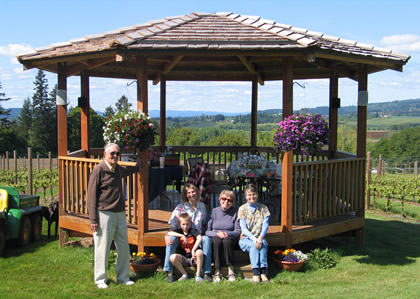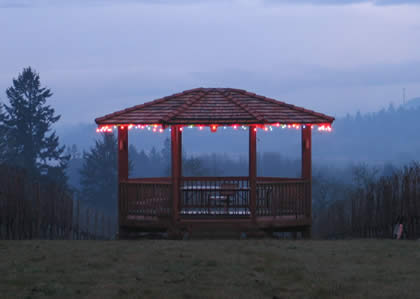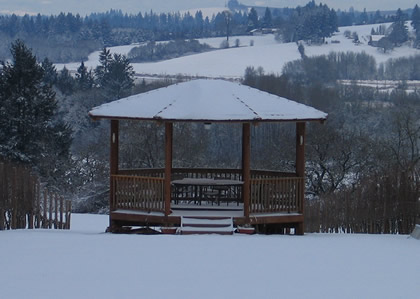Harlow Hills Vineyard and Event Venue
Vineyard and Events
Our vineyard.
We are very happy to say that we also have all the trellising up and are through with that building phase of putting in a vineyard!
An overview of the vineyard’s requirements during the year:
- During the winter time, when plants are dormant we prune them and train them for the next growing season. This is our first good look at the crop potential for the coming season. Most of the vineyard is head trained/cane pruned, but we are experimenting with cordon training/spur pruning for a portion of the Pinot Gris to control help control vigor.
- Spring brings the excitement of new growth and bud selection. Grape plants will produce several shoots from each bud if allowed but we want just the primary shoot to grow as it is the most fruitful.
As spring turns into summer we concentrate on training the young shoots to grow straight up and we remove the laterals.
- Late in the summer we remove secondary grape clusters and the leaves on the east side of the grape bunches to give them more sunlight. This also helps the dew dry off in the morning.
- Fall is the pinnacle of the growing season with all eyes on harvest. This is the time that the grapes turn their beautiful blue and purple colors and the sugar content works up to the desired 24 brix. As a grower, we work very closely with our buyers during the final few weeks to determine the optimum harvest time. It is always a balancing act to get the most maturity out of the grapes but still be able to bring the harvest in before the Oregon rains come. We want sugar, acidity, pH and the subtle flavors to be just right to produce a fine Pinot!
During the whole growing season we strive to control powdery mildew and botridus with environmentally friendly sprays. We keep as many hedgerows and green spaces intact as possible to encourage beneficial insects.
Our young son loves to point out the Praying Mantis egg cases and Ladybugs as we work on pruning, so we know there are a lot of them around!
How to Hand-Pick Grapes.
Hand-picking is almost always preferred for wine grapes, or for smaller vineyards that can’t risk losing any product.
For handpicking, you’ll need clippers and 2 five gallon buckets for each picker. Quite simply, you clip the bunches off each long vine and place them in the buckets. Take care not to damage the larger vines. Each bucket weighs about 20 lbs when it is full. The buckets are then emptied into “totes” at the end of the rows. These totes will weigh 800- 1000 lbs when full and are moved by tractor to a truck or trailer to be delivered to the winery.
The grapes are picked transported and usually crushed all in the same day.
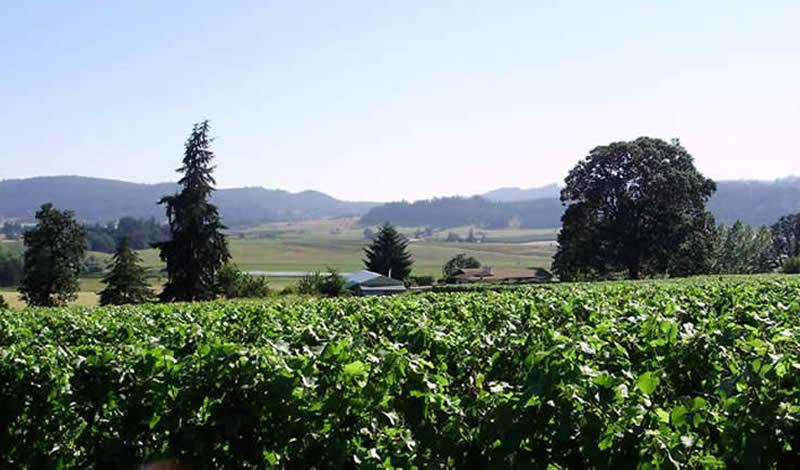 Our vineyard and view of the valley.
Our vineyard and view of the valley.
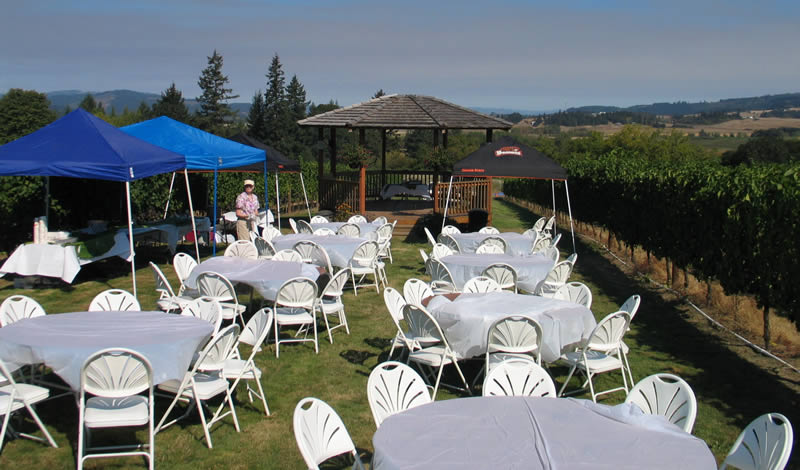 We can host your weddings or other special events.
We can host your weddings or other special events.
 Join us for an open farm day.
Join us for an open farm day.
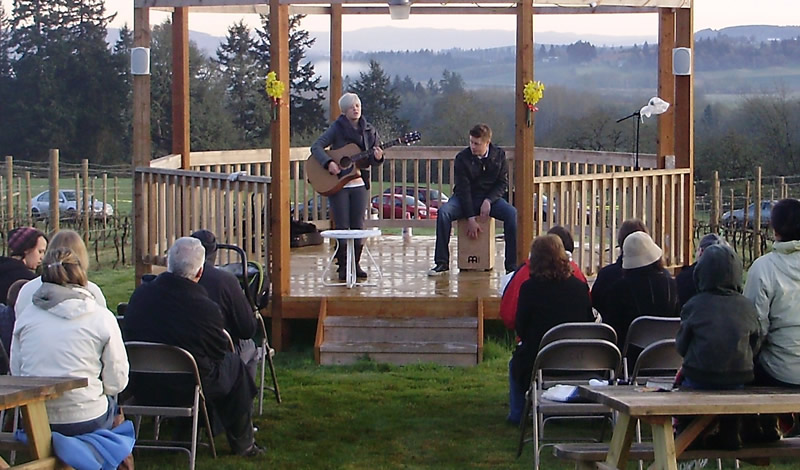 Easter Sunday services in the vineyard.
Easter Sunday services in the vineyard.
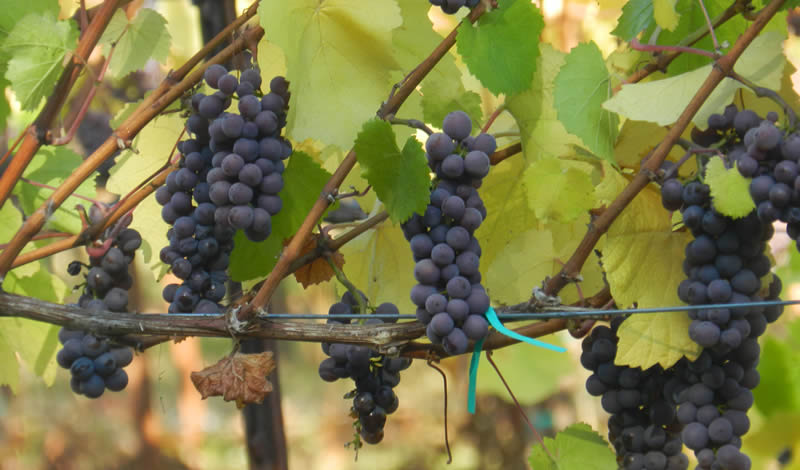 Fall Grape harvest. Call for schedule and join us.
Fall Grape harvest. Call for schedule and join us.
